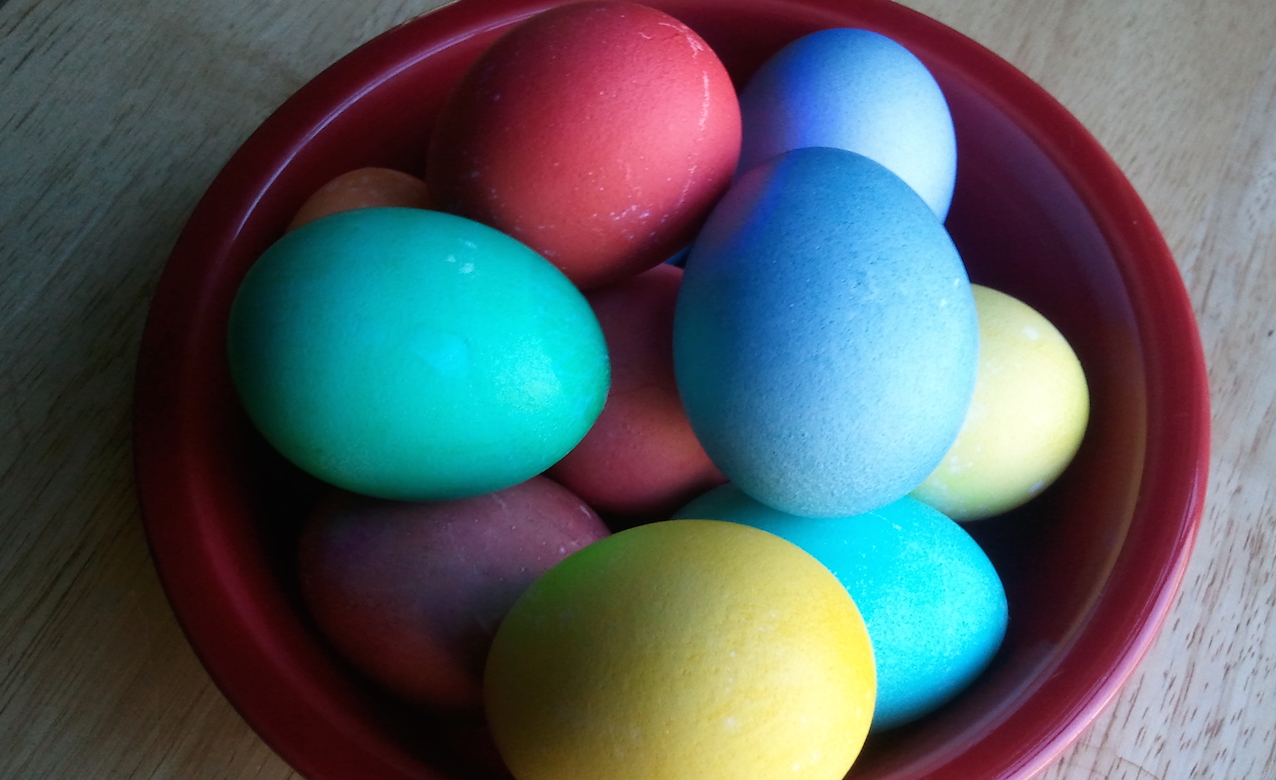
Colored eggs are symbolic of Easter. You can get them straight from the chicken or you can color them yourself with homemade dyes.
Easter is April 4 this year, coming up soon, and if you have your own flock of Easter Egg layers, you’ve already got colored eggs. With everyone trying to be more self-sufficient, maybe it’s time you had your own flock, in which case I recommend the Ameraucana breed of chicken. This breed lays a light blue or green egg. When crossed with brown-egg layer breeds like the Rhode Island Red, you’ll get an even wider variety of colors trending to the olive greens and dark browns.
If raising your own chickens isn’t your style, coloring your own eggs can be a fun project for the kids who are all at home right now. You can make the project educational by combining colors and experimenting with natural ingredients that you probably already have in your house.
Start by hard boiling the eggs. Place eggs in pan. Cover with cool water to cover the eggs by one inch. Bring to a boil and boil for
Alternatively, you can hard boil and color the eggs at the same time by adding different ingredients to the water solution AND one tablespoon of vinegar per two cups of water used. (No vinegar is needed if you’re dying the eggs in coffee or tea.) Use the following ingredients:
- Add chopped red cabbage for a light blue
- Add turmeric for yellow
- Add chopped beets for lavender
- Add onion peels for light orange
- Add fresh or frozen blueberries for blues to purples
- Add fresh or frozen cranberries for pinks to reds
- Add finely chopped parsley or dandelion greens for greens
Be sure to use only chemical-free dandelions. There’s plenty out there in the lawn right now. Boil eggs in coffee or black tea for various shades of brown.
If your eggs are already hard-boiled, prepare your dye by combining an ingredient above with water and boiling until the water picks up the color. The longer you boil, the more intense the color. Strain and add one tablespoon vinegar per two cups of dye. Place the uncracked, hard-boiled egg in the dye and let it sit until it picks up the color, anywhere from 20 minutes to overnight.
Try different combinations—for example—use blueberries and turmeric for a green or cranberries and turmeric for orange. This is where you can teach the color wheel to youngsters. Blue and yellow makes green. Blue and red makes purple. Red and yellow makes orange.
Now that you have all those hard-boiled eggs, you’ll need to make something out of them. You can keep your boiled eggs in their shell in the refrigerator for about a week. After that, you’ll know when they’re bad because you’ll smell a sulfur odor to them.
Egg salad
- 8 to 10 large hard-boiled eggs
- 1/4 cup mayonnaise
- 2 Tbsp. dill relish
- Fresh chives minced, to taste, optional
- 1 Tbsp. Dijon mustard
Peel eggs. Cut into quarters and place in mixing bowl. Finely mince eggs, using a fork to smash them against the bottom of bowl. Add remaining ingredients and mix. Season with salt and pepper to taste. If your salad is too dry, add more mayonnaise.
1000 Island Dressing
Makes 2 cups. A perfect dressing for that wedge of iceberg lettuce.
- 3/4 cup mayonnaise
- 1/4 cup ketchup
- 1 Tbsp. Worcestershire sauce
- 1/4 cup pickle relish
- 1/4 cup finely minced onion
- 2 hard-boiled eggs, finely chopped
- 1 Tbsp. chili powder
- Combine all ingredients. Keep refrigerated.

